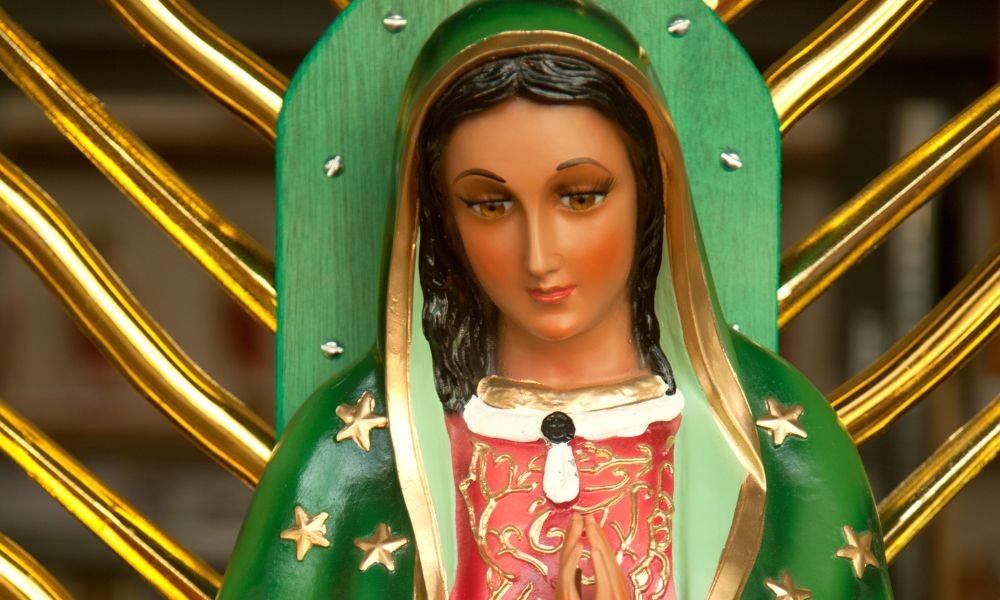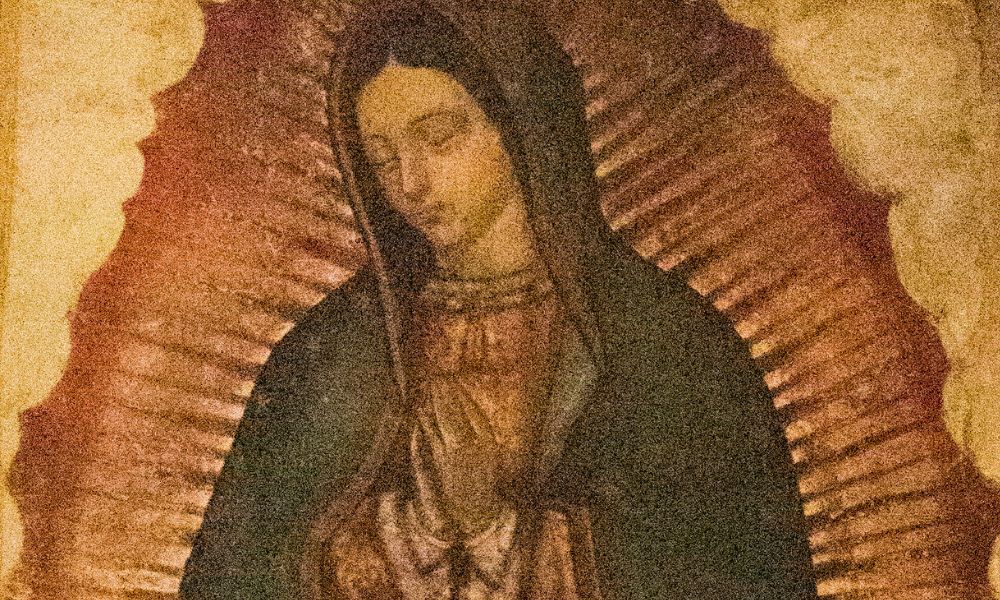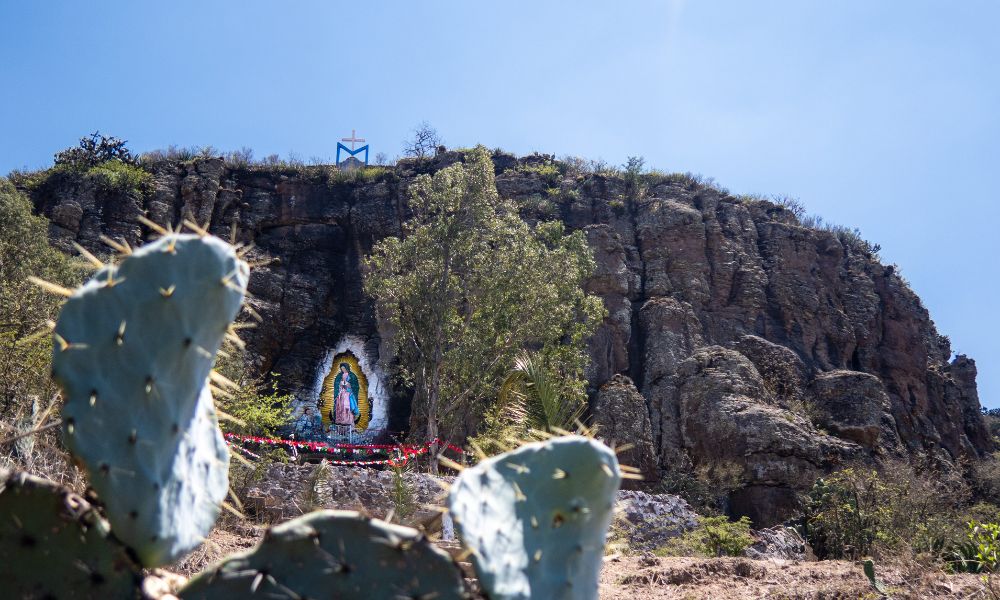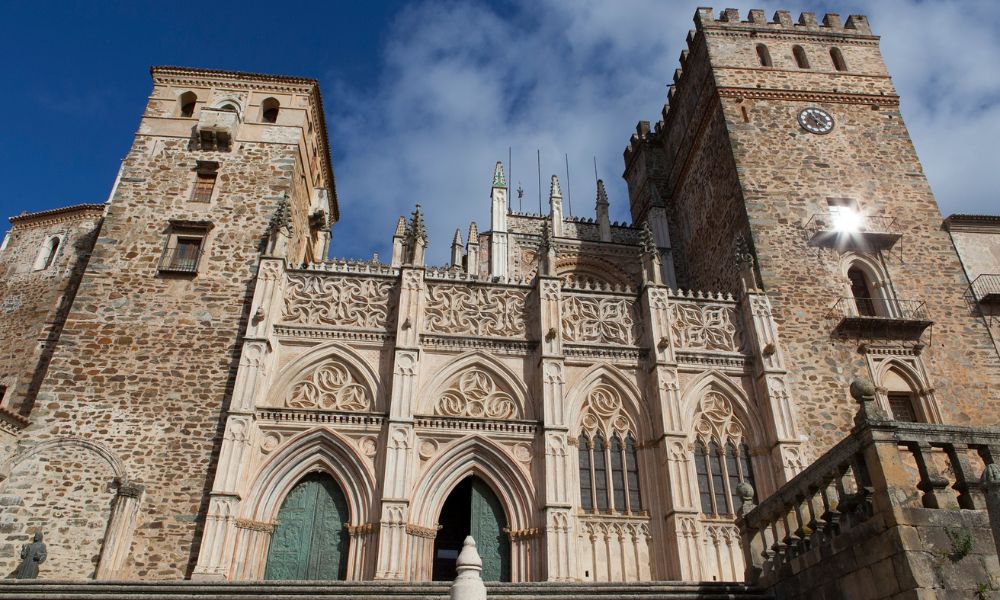In Mexico, the Shrine of Guadalupe stands as a beacon of devotion and culture that transcends geographical and spiritual boundaries.
Officially known as the Basilica of Our Lady of Guadalupe, it is a key pilgrimage destination for the faithful from around the world. It is also a profound symbol of Mexican identity. As one enters this sacred site, the visitor encounters the “Empress of the Americas“.
This guide invites readers to explore the depths of the Shrine of Guadalupe. We will reveal how this sacred place has influenced the lives of millions and has remained a spiritual and cultural meeting point.
Through a journey into its architecture, the stories of miracles attributed to it, and its place in art and society, you will discover why it continues to be one of the most venerated sites in the Christian world.
First of all, it is important to understand how this spiritual event marked a turning point in pilgrimages in Mexico. Marian devotion influenced the shaping of national identity.
The figure of the Virgin of Guadalupe has been compared in importance and devotion to the Virgin of Lourdes in France, with both being central to the religious traditions of their respective countries.
In the 16th century, Mexico was a mosaic of indigenous cultures recently subdued under Spanish rule. The conquest had brought about drastic changes in the social and religious structure of the region. Spanish missionaries were fervently dedicated to the evangelization of the indigenous peoples, facing a backdrop of resistance and religious syncretism.
In this context of tension and transition, the apparition of the Virgin of Guadalupe to Juan Diego in 1531 became a powerful symbol of unity and reconciliation between disparate cultures.

The Virgin of Guadalupe is not just a spiritual figure. More than that, she is an emblem of Mexican identity. Her image has been integrated into all aspects of Mexican cultural life, from art and music to politics and social movements. Her significance transcends the religious sphere, symbolizing resistance and protection for many generations.
In popular culture, she represents a mother who embraces all Mexicans, regardless of their origin, creating a sense of belonging and unity.
The apparitions on the Hill of Tepeyac in 1531 are one of the most significant and miraculous events in the religious history of Mexico. It is comparable in its spiritual impact to other recognized Marian apparitions such as those of Medjugorje and the Shrine of Fátima.
These events not only strengthened the faith of millions, but they also gave rise to the creation of one of the world’s main pilgrimage centers.

Juan Diego, an indigenous person converted to Christianity, was a witness to the first apparition of the Virgin Mary on December 9, 1531 while walking on the Hill of Tepeyac. The Virgin, who appeared in a form reflecting Juan’s cultural heritage, asked him to build a temple at that location in her honor.
Despite the initial doubts of the religious figures of the time, Juan Diego’s persistence and the subsequent apparitions marked a turning point in the region’s religious history.
Her words to Juan Diego were a call to faith and reconciliation between the different cultures and traditions present in Mexico at that time.
These messages were not only intended to establish a place of worship. They aimed to solidify a lasting cultural and spiritual bond between the indigenous peoples and the European conquerors, symbolizing maternal care for all the inhabitants of the region.

Juan presented the tilma to Bishop Zumárraga, on which the image of the Virgin had miraculously appeared. This event marked a turning point that led to the construction of the shrine and solidified the Church’s faith in the apparitions.
Here is the translated HTML text, maintaining the exact structure, format, and content: “`html
The modern analysis of the tilma continues to amaze scientists and theologians due to the inexplicability of its preservation and the quality of the image. It shows no signs of human painting or drawing and has withstood deterioration against all natural expectations.
This place is a symbol of faith, as well as a testament to the growth and evolution of religious practice in the region, similar in importance to other major pilgrimage centers like El Rocío. Over the centuries, this sanctuary has undergone significant transformations that have expanded its infrastructure and enriched its artistic and cultural value.

Construction began shortly after the Virgin’s apparitions to Juan Diego in 1531, initially as a small hermitage. With the growing number of pilgrims and the recognition of the church, the original structure was replaced by a larger chapel in 1709, known as the Old Basilica.
However, due to its deterioration and the need to accommodate an even larger number of visitors, the modern Basilica of Our Lady of Guadalupe was erected in 1976. It was designed by architects Pedro Ramírez Vázquez and Fray Gabriel Chávez de la Mora, and has since served as a focal point for Marian devotion on the continent.
The Basilica is notable for its impressive modern architecture, with a circular floor plan that allows the image of the Virgin to be visible from any point inside the building. Its dome is one of the largest in Latin America, decorated with stunning contemporary artworks that narrate the history of the apparitions.
Additionally, the complex includes several chapels, each with its own artistic and devotional value. They are enriched with works by famous Mexican artists that reflect both faith and the cultural identity of the country.
Within the sanctuary, the original image on Juan Diego’s tilma occupies a place of honor and is the center of Guadalupan devotion. This icon is not only an object of religious veneration but also a cultural artifact of immense historical value.
Moreover, the atrium of the sanctuary, one of the largest in the world, serves as a space for mass celebrations and liturgical activities. Other significant elements include the Chapel of the Well, which houses a spring whose water is considered blessed; and the Marian Plaza, a space designed to facilitate prayer and reflection for the thousands of pilgrims who visit each year.
The Virgin of Guadalupe is not only a symbol of Marian devotion in Mexico and throughout the Spanish-speaking world. She also embodies a profound theology that has influenced Catholic faith and the cultural dynamics of Latin America.
Her apparition at Tepeyac is interpreted as an event full of theological and symbolic meaning. It not only brought messages of hope and faith but also played a crucial role in the formation of a new social and spiritual fabric in the New World.
The Guadalupan theology focuses on how Mary, appearing with mestizo features and speaking Nahuatl, presented herself as the mother of all peoples, promoting a message of inclusion and universal love.
This act was a powerful message of acceptance and dignity towards the indigenous people, at a time when conquest had marginalized these populations. Theologically, she is seen as the Mediator of all graces and protector of the helpless, reflecting the Catholic doctrine of Mary as an intercessor before God on behalf of humanity.
Since her apparition in 1531, she has served as a symbol of unity and reconciliation between the indigenous and Spanish cultures. Her image has been a catalyst for the fusion of these two cultures, creating a unique religious and cultural identity in Mexico.
This symbolism of unity extends beyond the borders of Mexico, touching the lives of devotees in numerous countries. The Virgin of Guadalupe is an icon of cohesion and peace in places with large Latin American populations.

Each year, millions of devotees travel from all parts of Mexico and the world to pay homage and seek comfort at this sacred site. These pilgrimages are a living expression of religious culture, rich in traditions and deeply rooted in the faith of the community.
The tradition of pilgrimaging to the Sanctuary began shortly after the Virgin’s apparitions in 1531. Initially, it was the locals who visited the humble original temple. Over time, the fame of the miracles attributed to the Virgin attracted visitors from farther away, turning these visits into mass pilgrimages.
In the 20th century, with the construction of the new Basilica and the growth of transportation infrastructure, the number of pilgrims grew exponentially. Today, December 12th, the day of the Virgin of Guadalupe, is one of the largest and most emotional celebrations in the Mexican religious calendar.
Throughout the year, and especially around December 12th, the sanctuary is the stage for numerous religious activities. Masses are held almost every hour, with special ceremonies to bless the pilgrims.
The processions are particularly impressive, with faithful bringing images of the Virgin from their localities. Additionally, traditional dances, songs, and floral offerings fill the atmosphere with festivity and devotion. These activities not only reinforce individual faith but also strengthen the community, as they share this spiritual experience together.
For those planning their pilgrimage, it is crucial to plan ahead. The sanctuary is accessible by public transport from any point in Mexico City. During major festivities, it is recommended to arrive early to avoid crowds and secure a place in the masses and processions.
Regarding accommodation, there are numerous options near the sanctuary that can accommodate pilgrims, from hotels to hostels and local family homes. It is also important to respect the sanctuary’s rules, such as appropriate clothing and respectful behavior, to maintain the solemnity of the place.
The influence of the Virgin extends through art, music, literature, and is a pillar in the construction of national identity. Every year, her feast catalyzes a series of celebrations that showcase the richness of Mexican traditions.
The Virgin of Guadalupe has inspired countless works of art, from majestic murals and sculptures to delicate paintings that adorn both places of worship and homes.
In music, numerous songs and compositions have been dedicated to her, reflecting her deep roots in the hearts of the people. In literature, writers have explored her figure as a symbol of hope and unity, incorporating her into narratives that comment on Mexican society and history.
The Virgin of Guadalupe is considered a unifying symbol within Mexico’s cultural diversity.
Her image is ubiquitous and acts as a cohesive element among different ethnic and social groups. Since her apparition at Tepeyac, she has been adopted as the protective mother of this country. She has figured prominently in key moments of national history, including independence and subsequent revolutions.
The celebration of December 12th, the day of the Virgin of Guadalupe, is one of the most important and emotional festivities in Mexico. Thousands of pilgrims travel to the Sanctuary of Guadalupe to participate in masses, processions, and rituals filled with color and religious fervor.
The “mañanitas” to the Virgin and serenades are standout traditions of this date, experienced with special enthusiasm and devotion.
Stay Connected with WayHoly
Discover your perfect pilgrimage and be the first to know about new journeys. By subscribing to our newsletter, you’ll receive the latest updates on pilgrimages, exclusive offers, and spiritual resources to enrich your faith journey.
Don’t miss the opportunity to deepen your connection with God and lead others on their path to spiritual renewal. Join us today and become an instrument of His Will through WayHoly!
“To upload your pilgrimage, please choose one of our plans and create an account, or log in if you’re already a member. Join us in guiding others on their spiritual journey.”